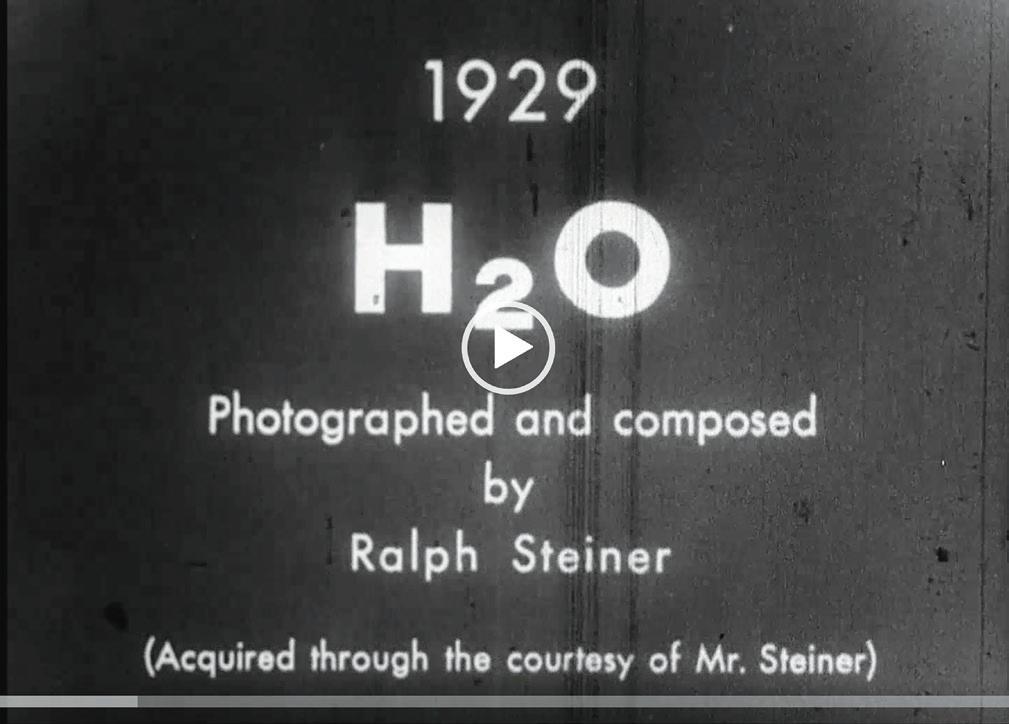
3 minute read
A SILENT ERA
By Jesse Pires Director & Curator, Lightbox Film Center
At the beginning of the 20th century, movies were being produced in every part of the world. In the United States, film studios were spread around the country from Chicago to New York to Los Angeles. Philadelphia was also the home of a major motion picture studio. The Betzwood Motion Picture Studio, started by Sigmund Lubin, was a major producer of silent films beginning in 1910; the studio eventually expanded to a 350-acre facility near Valley Forge. Lubin’s fame was short-lived as his Philadelphia studio caught fire and most of his films were lost. By the 1920s, most regional film studios had ceased operations or had moved to sunny southern California, lured by cheap land. Film production, now based in “Hollywood,” was becoming more industrialized, however the young art form was still ripe for experimentation both in the US and elsewhere.
Advertisement
In Europe, a new era of modern art emerged following World War I. Painters and sculptors were eager to bring ideas about color, shape, and movement to the world of
A CLOSER LOOK:

Watch the film (10:24). Although it is silent do you get a sense of rhythm or music based on how the filmmaker arranged the images?
The film is considered abstract but watch closely, does it tell a story? What messages about the environment and pollution might modern viewers take from this film?
How do you think this film was presented when it was released in 1929? How do you think audiences reacted to it?
moving images. Further east, following the Russian Revolution, a new style of Soviet filmmaking merged socialist ideals with innovative storytelling. While the silent comedies and dramas produced in Hollywood had become the most popular form of entertainment throughout the United States, the influence of Soviet and European filmmaking was also making its mark. In 1923, the advent of 16mm film transformed the art of filmmaking as the new camera was lighter and more portable than the standard 35mm camera. Artists and filmmakers could take to the streets and more easily capture everyday life beyond the confines of a movie studio. Impressionistic documentaries about urban life known as “City Symphonies” emerged during this period, as did a style of abstract animated films known as “Visual Music,” where films became like moving paintings. By the end of the 1920s, recorded sound could be added to a film print and the silent film era was effectively over. Movies continued to rise in popularity and quickly became the dominant art form of the 20th century.
Ralph Steiner is primarily known as a photographer, having worked in advertising throughout the 1920s. Fellow photographer turned filmmaker Paul Strand encouraged Steiner to join the Workers Film and Photo League, a collective dedicated to using film and photography to inspire social change. In 1929 Steiner made his first film, H2O, a poetic meditation on light and shadow in water. H2O was instantly recognized as a landmark film that transforms its simple subject into a dazzling spectacle of abstract forms and textures. Like Strand, who focused his films on “the everyday” as a kind of antidote to the fanciful, glamorous world of Hollywood, Steiner brought a poetic feel to a subject that touches all life on earth. H2O was added to the National Film Registry in 2005 and is considered one of the classic films of the early American avant-garde. Steiner continued to work in film until the 1970s and was an influence on many filmmakers and photographers.
Young student filmmakers can document their own everyday surroundings and impressions of the natural world, just as Steiner did in this silent, landscape film. Teachers can also use this meditative film and others like it to introduce mindfulness and tend to their students’ socialemotional needs.
Buster Keaton was one of the most famous comic actors of the silent film era, second only to Charlie Chaplin. His films are known to involve a high degree of visual tricks and physical comedy, with Keaton doing most of his own stunts. Sherlock, Jr. from 1924 features Keaton in a double role, a film projectionist and the title character. Featuring a dizzying “film-within-a-film” sequence, Sherlock, Jr. pushes the boundaries of movie magic long before the invention of computer-generated imagery (CGI).
The slapstick comedy of Keaton, Chaplin and their peers was not easily translated into the era of “talking pictures” and while they continued to make films beyond the 1920s, their innovative approach to filmmaking during this time is a true testament to overcoming limitations. We may take for granted that the movies we watch today are more realistic because they contain dialogue and sounds but silent films, especially those from the 1920s, were extremely well crafted in order to tell a story almost entirely through visual means.
Students will be enamored with Keaton’s deadpan humor and imaginative creativity. He’s sure to inspire students to create their own short silent films in this style.
Sherlock, Jr. poster. (1924). Wikimedia Commons. https://commons.wikimedia.org/wiki/File:Sherlock_jr_ poster.jpg
Keaton, B. (Director). (1924). Sherlock, Jr. https://www.youtube.com/watch?v=JRXkAhMYKEc

A CLOSER LOOK:

Look closely at the movie poster. What are some objects that you can see? What do you think this film is about? Would you know that this film is a comedy based on this image?
Look at the text. The star of the film and the title are the biggest words. What other people are mentioned? Why do you think these names were chosen to be on the poster?
Do you think this image depicts something that happens in the film? Why would an illustration be used for a film poster instead of an actual picture from the film itself?









